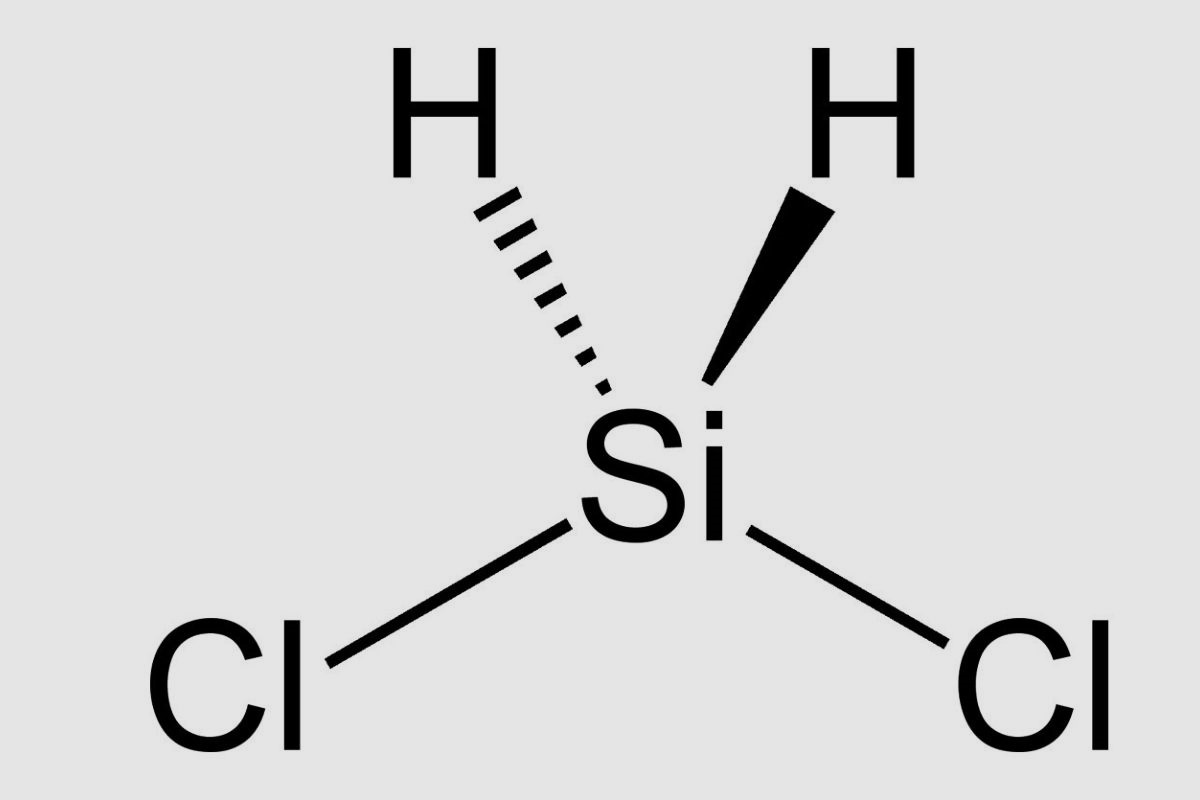
Dichlorosilane might sound like a mouthful, but it's a fascinating compound with a lot of interesting uses. What is dichlorosilane? Dichlorosilane is a chemical compound made up of silicon, hydrogen, and chlorine atoms. It's often used in the semiconductor industry to help create the tiny circuits in your electronic devices. This compound is also a key player in producing silicon-based materials, which are essential for making solar panels and other high-tech gadgets. Despite its importance, many people don't know much about it. Let's dive into 30 intriguing facts about dichlorosilane that will shed light on its properties, uses, and significance in our daily lives.
Key Takeaways:
- Dichlorosilane is a flammable gas used in electronics and solar panel production. It requires careful handling and disposal to minimize environmental impact and ensure safety in industrial applications.
- With its unique chemical properties, dichlorosilane plays a crucial role in semiconductor industry processes. Its reactivity and versatility make it valuable in various synthetic applications, but proper safety measures and environmental considerations are essential.
What is Dichlorosilane?
Dichlorosilane, a chemical compound with the formula SiH2Cl2, plays a significant role in various industrial processes. It’s a colorless, flammable gas with a sharp, pungent odor. Here are some intriguing facts about this compound.
-
Dichlorosilane is primarily used in the semiconductor industry for chemical vapor deposition (CVD) processes.
-
The compound is highly reactive with water, forming hydrochloric acid and silane.
-
It has a boiling point of 8.3°C (46.9°F), making it a gas at room temperature.
-
Dichlorosilane is often stored in pressurized cylinders due to its gaseous state.
-
The chemical formula SiH2Cl2 indicates it contains silicon, hydrogen, and chlorine atoms.
Production and Synthesis
Understanding how dichlorosilane is produced and synthesized can shed light on its applications and handling.
-
Dichlorosilane is synthesized by the reaction of silicon with hydrogen chloride gas.
-
Another method involves the reduction of silicon tetrachloride with hydrogen.
-
The production process requires careful control of temperature and pressure to ensure safety and efficiency.
-
During synthesis, dichlorosilane can form as an intermediate product in the production of trichlorosilane.
-
The compound can also be produced by the disproportionation of trichlorosilane.
Applications in Industry
Dichlorosilane's unique properties make it valuable in various industrial applications.
-
It is widely used in the production of high-purity silicon for electronics.
-
The compound serves as a precursor for silicon carbide in the semiconductor industry.
-
Dichlorosilane is utilized in the deposition of silicon nitride films.
-
It plays a role in the manufacturing of photovoltaic cells for solar panels.
-
The compound is also used in the production of optical fibers.
Safety and Handling
Given its reactive nature, proper safety measures are crucial when handling dichlorosilane.
-
Dichlorosilane is highly flammable and can form explosive mixtures with air.
-
It should be stored in a cool, dry place away from sources of ignition.
-
The compound requires handling in well-ventilated areas to avoid inhalation of fumes.
-
Protective equipment, such as gloves and goggles, is essential when working with dichlorosilane.
-
In case of a leak, the area should be evacuated immediately, and emergency services contacted.
Environmental Impact
The environmental implications of dichlorosilane use and disposal are important considerations.
-
Dichlorosilane can react with moisture in the air, releasing hydrochloric acid, which is harmful to the environment.
-
Proper disposal methods include neutralization and controlled incineration.
-
The compound should not be released into the atmosphere or water sources.
-
Regulatory guidelines dictate the safe handling and disposal of dichlorosilane to minimize environmental impact.
-
Companies using dichlorosilane must comply with environmental protection standards.
Interesting Chemical Properties
Dichlorosilane has several fascinating chemical properties that contribute to its versatility.
-
The compound has a tetrahedral molecular geometry.
-
It can act as both a reducing agent and a chlorinating agent in chemical reactions.
-
Dichlorosilane is more reactive than its analog, silane (SiH4), due to the presence of chlorine atoms.
-
It can participate in hydrolysis reactions, forming silanols and hydrochloric acid.
-
The compound's reactivity makes it useful in various synthetic applications, including the production of organosilicon compounds.
Final Thoughts on Dichlorosilane
Dichlorosilane, a compound with the formula SiH2Cl2, plays a crucial role in the semiconductor industry. Its unique properties make it essential for producing high-purity silicon, which is vital for electronic devices. This colorless, flammable gas is also used in chemical vapor deposition processes, contributing to the creation of thin films and coatings.
Despite its importance, handling dichlorosilane requires caution due to its reactive nature. Proper storage and safety measures are necessary to prevent accidents. Understanding its applications and risks helps industries utilize this compound effectively while ensuring safety.
In summary, dichlorosilane's significance in technology and manufacturing can't be overstated. Its contributions to advancements in electronics highlight the importance of continued research and development in chemical compounds. By staying informed about its uses and precautions, industries can harness its potential while maintaining safety standards.
Frequently Asked Questions
Was this page helpful?
Our commitment to delivering trustworthy and engaging content is at the heart of what we do. Each fact on our site is contributed by real users like you, bringing a wealth of diverse insights and information. To ensure the highest standards of accuracy and reliability, our dedicated editors meticulously review each submission. This process guarantees that the facts we share are not only fascinating but also credible. Trust in our commitment to quality and authenticity as you explore and learn with us.
